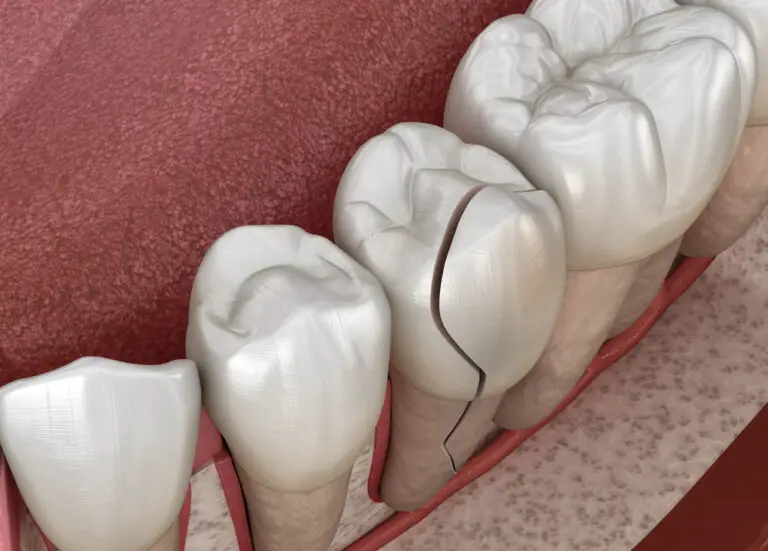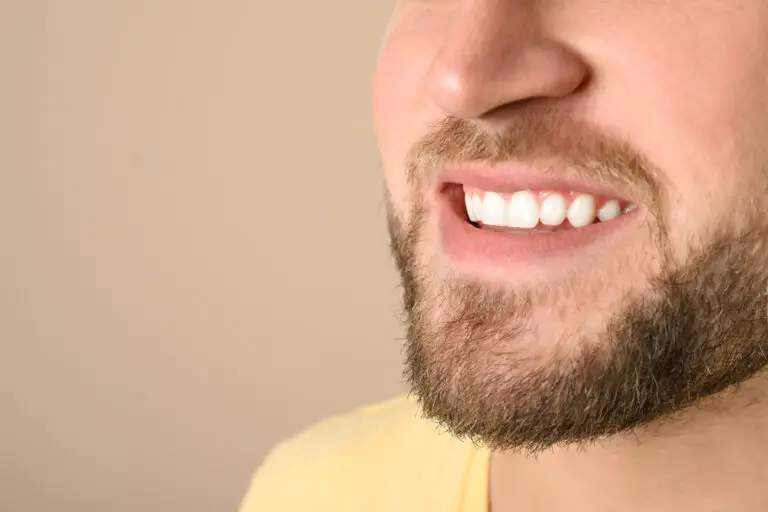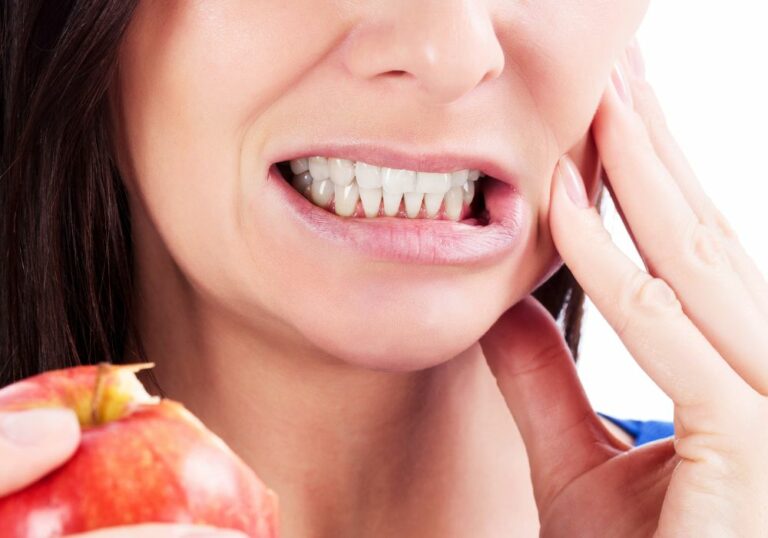Teeth are complex structures that serve important functions in our daily lives. Having a healthy, functional set of teeth allows us to eat, speak and smile properly. However, there are many instances where teeth become damaged, decayed or missing entirely. In these cases, people may require artificial simulations of teeth to restore dental function and aesthetics. There are a variety of materials and methods available to replace natural teeth when needed.
What can simulate teeth?
1. Dentures
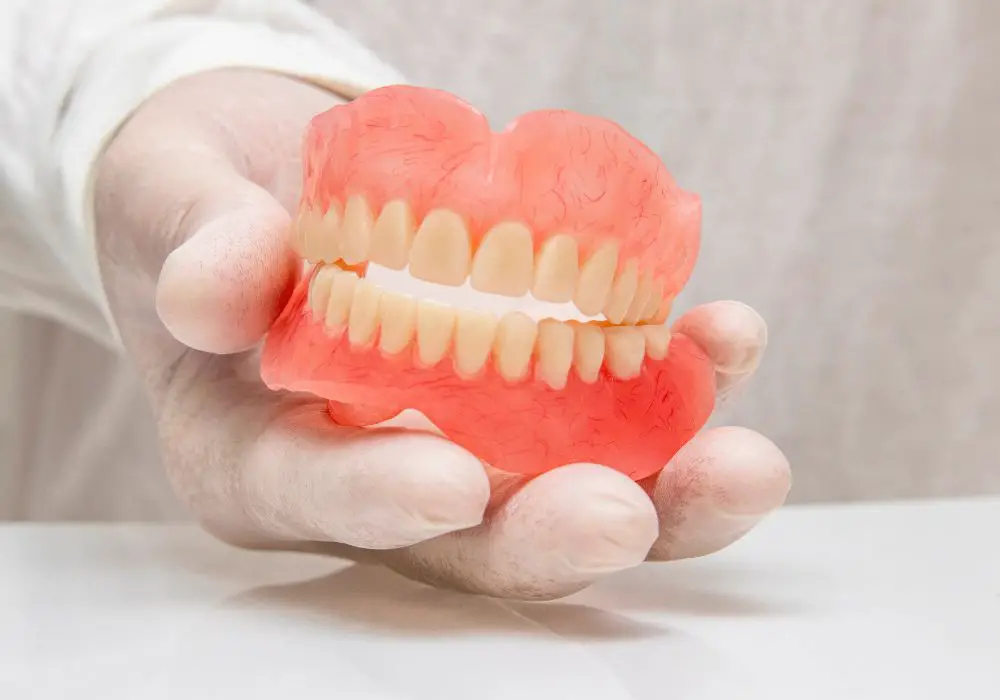
Dentures are removable appliances that replace missing teeth and surrounding gum tissues of the upper or lower jaw. They have been used for centuries to simulate the look and function of natural dentition. Dentures can be a cost-effective and non-invasive solution for total or partial tooth loss.
Types of Dentures
There are several main types of dentures:
- Complete dentures – Also known as full dentures, these replace all of the teeth in a jaw. The base covers the entire palate or gingival surface. They rely on suction and bone ridges for retention.
- Partial dentures – Also referred to as removable partial dentures (RPDs), these replace one or more missing teeth while using nearby teeth as anchors. Clasps, rests and precision attachments help keep the RPD secure.
- Implant-supported dentures – Conventional dentures can be modified to snap onto dental implants or abutments. This helps stabilize the denture and prevents slipping.
- Temporary dentures – Interim dentures may be used while a permanent set is being made. They help maintain chewing ability and facial contours.
The type of denture recommended will depend on a patient’s specific needs and dental condition. Custom-made dentures provide the best fit and comfort compared to generic premade varieties.
Materials Used for Dentures
The base of dentures is typically fabricated from either acrylic resin or a flexible thermoplastic material. The artificial teeth are composed of plastic, porcelain or a combination.
- Acrylic resins – A denture base made of acrylic methyl methacrylate is lightweight, durable and inexpensive. It can be easily tinted to match gum tissue. However, acrylic may absorb oral fluids over time and become prone to cracks and fractures.
- Thermoplastic materials – Flexible partial dentures are injection molded from nylon or thermoplastic polymers. These materials provide a resilient yet strong base. Clasps are not required due to the tighter fit. However, thermoplastic resins tend to gradually lose their flexibility with ongoing use.
- Porcelain teeth – Denture teeth made of porcelain ceramics can mimic the translucency and light reflection of natural tooth enamel. But porcelain teeth are also brittle and prone to chipping or fracturing under stress.
- Plastic teeth – Acrylic resin denture teeth are inexpensive to fabricate. The plastic teeth are easy to adjust but lack the appearance of real teeth. They also tend to stain and wear down more readily.
- Metal alloys – Cobalt chromium is sometimes used for all or part of the denture base. It provides rigidity and support where needed. Can be unesthetic if exposed metal shows.
The Advantages and Disadvantages of Dentures
There are a number of benefits as well as drawbacks associated with wearing conventional dentures:
Advantages
- Restore chewing ability and bite force to allow normal eating
- Improve speech and pronunciation
- Restore the natural facial contours affected by tooth loss
- Relatively inexpensive compared to other tooth replacement options
- Portable and easy to insert and remove daily
Disadvantages
- Can affect taste sensations since the palate is covered
- May require frequent adjustments to improve fit as the mouth changes
- Can be uncomfortable initially until the wearer adapts
- Lack sensation of natural teeth
- May need to be remade every 5-10 years as they deteriorate
- Can irritate gums and supporting tissues
- Risk of bone resorption over time without tooth stimulation
Proper denture care and use of adhesives can help maximize the advantages while minimizing the disadvantages associated with conventional dentures.
2. Dental Implants

Dental implants are artificial tooth roots surgically placed into the jawbone below the gums. Implants provide strong, stable anchors to hold replacement teeth in place. They are the closest approximation to natural tooth structure and function.
Materials Used for Dental Implants
The majority of modern dental implants feature a screw or cylindrical design made from biocompatible titanium metal. Titanium integrates with bone tissue through the process of osseointegration. The surface of implants may be treated to speed up and enhance osseointegration. Other materials such as ceramic zirconia have also been used but lack long-term clinical research.
Titanium offers advantages such as:
- Highly biocompatible and non-allergenic
- Strong, lightweight and durable
- Resists corrosion from oral fluids
- Allows for stable osseointegration with bone
- Can be safely imaged with dental radiographs
- Available in different grades optimized for dental use
Ceramics like zirconia have benefits including:
- Aesthetic white color similar to teeth
- Biocompatible with adequate osseointegration
- Provides natural soft tissue attachment
- High strength and fracture resistance
The tradeoffs are that ceramic implants are technically more challenging to place and restore. Fracture of the implant body is also a risk in rare cases.
Types of Dental Implants
There are several main types and applications of dental implants:
- Endosteal implants – These are cylinders or screws embedded into the jawbone. They are the most commonly used variety.
- Subperiosteal implants – These metal implants lie on top of the jaw bone under the mucosa. They are less frequently used today.
- Single tooth implants – An individual implant replaces one missing tooth and its root. A crown is attached to complete the restoration.
- Multiple tooth implants – Two or more implants can support fixed bridges and dentures to replace several adjacent teeth.
- Full arch implants – Implants can be placed along the entire upper and/or lower dental arch for long spans of replacement teeth.
The Advantages of Dental Implants
Implants offer advantages over other tooth replacement options:
- Provide stimulation to preserve jawbone density and structure
- Do not rely on adjacent teeth for support
- Secure restorations with crowns, bridges and dentures
- Restore ability to eat and chew comfortably
- May improve facial aesthetics and skin support
- Do not require removal of healthy teeth
- Long term survival rates over 95% (with proper care)
- Improved psychological comfort and self-esteem
The main downside of implants is the higher upfront cost compared to other tooth replacement options. However, their longevity can make them a more cost-effective solution in the long run.
3. Dental Crowns and Bridges
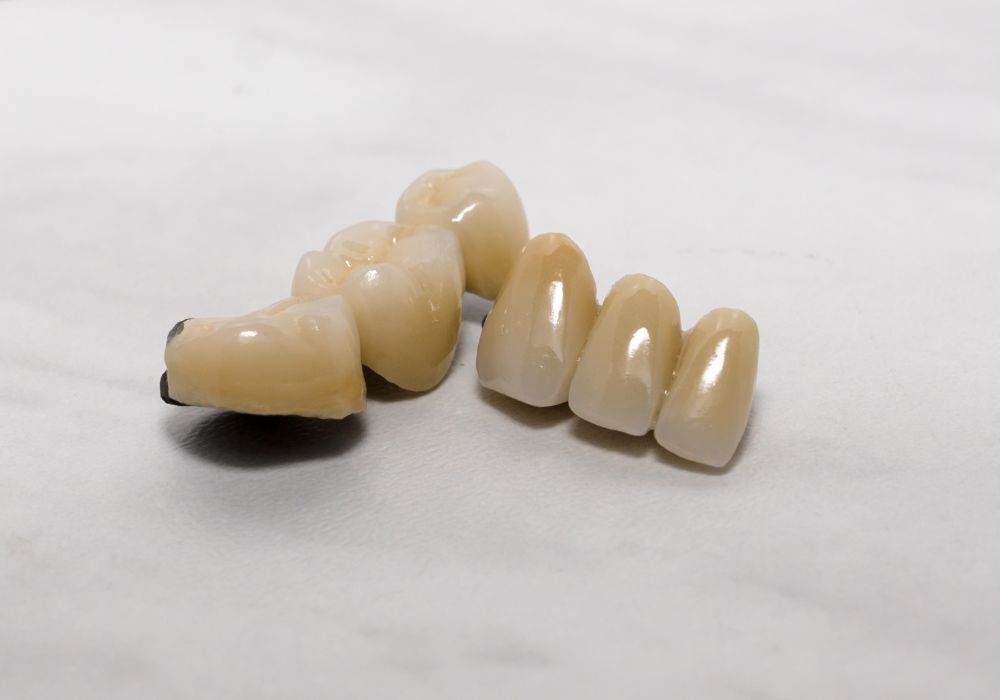
Crowns and bridges use artificial teeth bonded to an underlying base that sits over prepared natural teeth. They are commonly used to restore damaged or decayed teeth. Bridges span spaces where one or more teeth are missing.
Materials for Dental Crowns and Bridges
The materials used for the visible crown portion aim to mimic natural tooth color, shape and light reflection. The materials used for the underlying core and connectors focus more on strength and durability.
Some common options include:
Porcelain
- Glass-like ceramic that can be sculpted and colored to closely match natural tooth enamel
- Transmits light similarly to natural teeth for added realism
- May lack adequate strength for high stress areas
- Prone to chipping or fracturing under heavy biting forces
Porcelain-fused-to-metal
- Uses porcelain veneered over an inner metal core and frame
- Metal provides strength while porcelain mimics tooth appearance
- Can block natural light transmission resulting in a darker, opaque appearance
Gold alloys
- Gold is combined with other metals like platinum, silver, copper, and palladium
- Excellent biocompatibility and corrosion resistance
- Does not mimic natural tooth color but is highly durable
Zirconia
- Advanced ceramic that can be made very thin yet strong
- Aesthetically pleasing white color
- May appear slightly opaque compared to natural teeth
- Can fracture if the material quality is poor
Lithium disilicate
- Glass ceramic with excellent strength
- Highly translucent and lifelike aesthetics
- Requires a strong core foundation for support
- Slightly brittle but resists fractures better than porcelain
The Advantages of Dental Crowns and Bridges
When properly designed and fabricated, crowns and bridges offer benefits:
- Restore the shape, function and aesthetics of damaged teeth
- Reinforce weakened tooth structure
- Prevent remaining teeth from shifting position
- Resist fracture from chewing forces
- Extended lifespan of 15 years or longer with proper care
- Allow for normal oral function in eating and speaking
- Durable materials withstand the intraoral environment
The main disadvantages are the extensive tooth preparation required and higher cost compared to direct fillings. Some materials like porcelain may not be ideal for posterior crowns due to their tendency to fracture under high biting forces.
4. Tooth-Colored Fillings
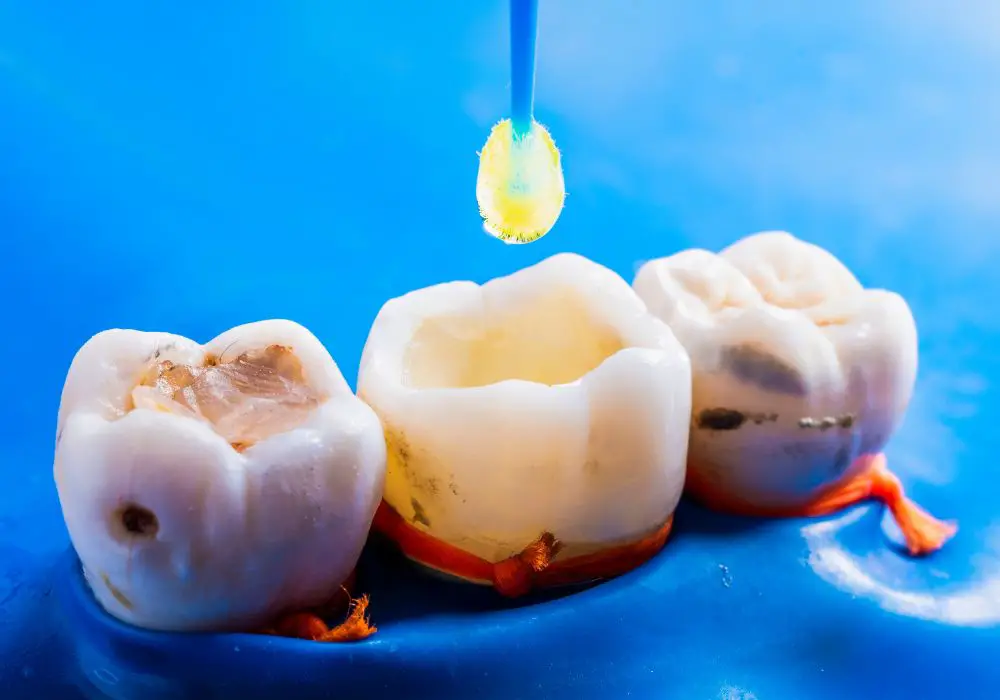
Tooth-colored fillings are materials like composite resin and glass ionomer cement used to conservatively repair teeth with mild to moderate decay or damage. They bond within the tooth and simulate the natural color.
Composite Fillings
Composite resin fillings are a mixture of fine quartz or glass particles dispersed in an acrylic resin binder. They match the color and translucency of natural teeth.
Advantages of dental composites include:
- Bonds tightly to etched enamel for added strength
- Can be matched precisely to surrounding tooth color and shade
- Durable material resistant to cracking and fracturing
- Does not corrode or weaken over time like metals
- Less tooth reduction needed compared to gold or porcelain fillings
- Generally holds up well to biting forces in moderate stress areas
Disadvantages include:
- Moderate incidence of postoperative sensitivity
- Costs more than amalgam fillings on average
- Requires a meticulous bonding technique sensitive to moisture and saliva
- May slowly discolor over time as resin degrades
- May gradually leak around margins as bonding breaks down
- More difficult to place properly in deep cavities
- Material shrinkage may lead to gaps at the margin causing sensitivity
Glass Ionomer Cement Fillings
Glass ionomer cements are composed of silicate glass powders combined with organic acid monomers. They release fluoride to help prevent decay which is useful in particularly high caries risk cases.
Advantages of glass ionomer fillings are:
- Moderate strength and fracture resistance
- Marginal seal resists leakage and improves retention
- Reasonable durability in small to mid-sized restorations
- Contains and releases fluoride helping lower decay risk
- Generally kinder to teeth with less postoperative sensitivity potential
The disadvantages include:
- Less durable and weaker ultimate strength compared to composites and amalgam
- More opaque and less natural esthetic appearance
- Requires surface protection from wear and moisture during setting
- Tendency to erode at margins over time leading to microleakage
- More susceptible to recurrent decay around restoration
5. 3D Printed Dental Prosthetics
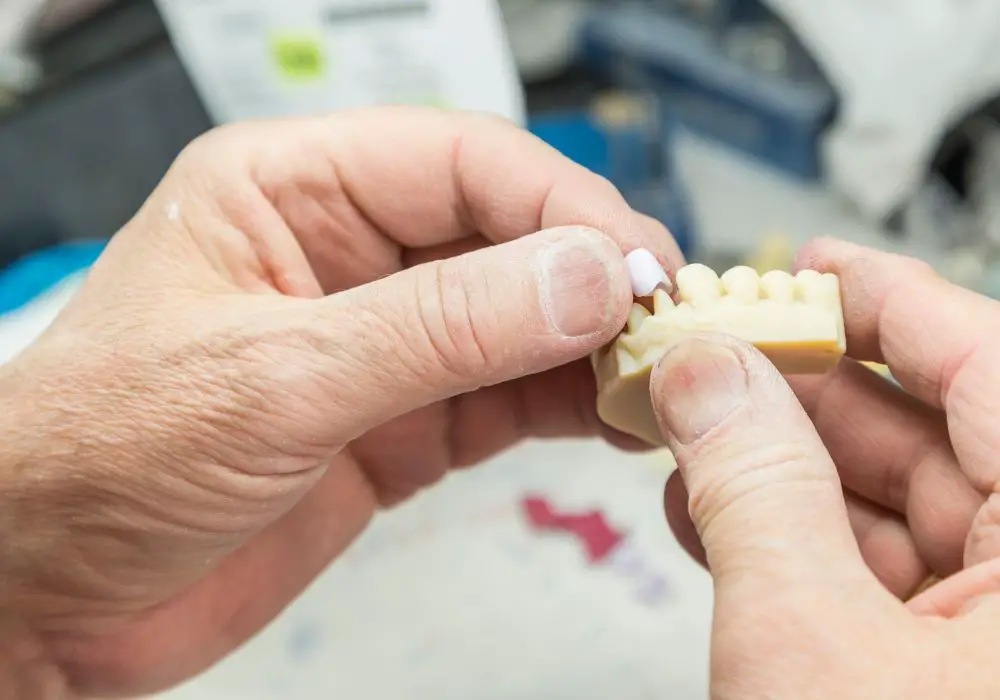
3D printing has allowed dentists to fabricate highly accurate and customizable dental restorations including crowns, bridges, partial dentures and surgical guides. 3D printed teeth can closely replicate natural tooth structure.
Materials Used in 3D Printed Dental Prosthetics
Various biocompatible ceramics and composites are available for 3D printing of dental prosthetics.
Metals like chrome cobalt, titanium, and titanium alloys are commonly used for partial denture frameworks, crowns, and bridges. Their high strength and toughness is ideal for the forces teeth must withstand.
Ceramics including zirconia, lithium disilicate, and hybrid resin-ceramics balance aesthetics and durability. Their tooth-like color, translucency and light handling characteristics mimic natural dentition. However, their fracture resistance may make pure ceramics less suited to posterior teeth.
Photopolymer resin composites allow detailed shaping and layered coloring effects. However, their strength is not adequate for crowns and bridges without a core substructure.
The Advantages of 3D Printed Teeth
3D printing offers significant benefits:
- Highly accurate digital impression reducing chairside adjustments
- Can fabricate anatomically identical crowns and bridges based on scans of preparations
- Significantly reduced time to deliver final restorations
- Ability to mill substructures plus layer color and effects
- Less wasted material compared to subtractive milling methods
- Cost effective for complex multi-unit restorations
- Improved marginal fit for better resistance to decay
- Mix ceramics and polymers for ideal strength and aesthetics
- Does not require physical impressions, lab work, or temporaries
- Can seamlessly blend restorations with natural dentition
The limitations include high printer costs, limited range of materials, and lower fracture strength of printed ceramics compared to milled. But the applications and capabilities continue to expand each year.
6. Tooth Whitening Products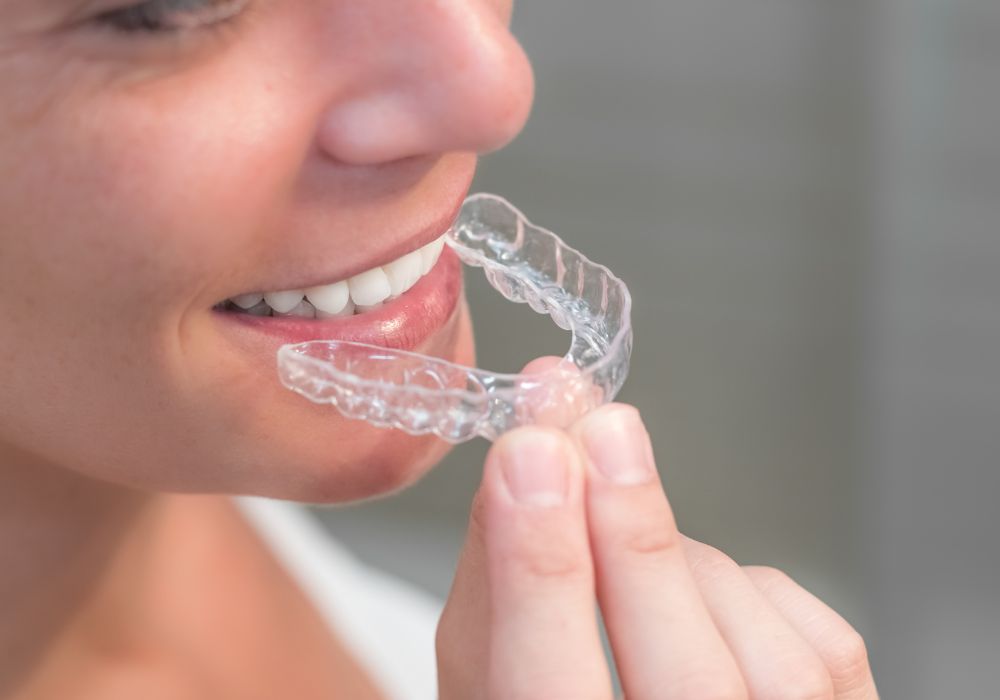
Many over-the-counter tooth whitening products create temporary stains on the enamel to reduce the visibility of naturally occurring yellowish stains. This optical effect makes teeth appear whiter and brighter.
Types of Tooth Whiteners
Popular tooth whitening product options include:
Whitening Toothpastes – Use mild abrasives to polish away surface stains from smoking, coffee, soda, wine, etc. Help remove buildup and buff teeth slightly whiter. May also contain bleaching agents.
Whitening Strips – Thin strips coated with peroxide whitening gels mold to teeth to bleach away stains. Require 30-60 minutes of application daily for 1-2 weeks.
Whitening Trays – Custom made trays are filled with peroxide gel and worn for a period daily. A stronger effect than strips as the trays keep gel against teeth.
Whitening Rinses – Oxygen infused mouthwashes promote circulation and oxidation to help break down pigmented deposits left on teeth.
Bleaching Pens – Small disposable applicators allow bleaching gel to be painted directly onto individual teeth as needed.
Active Ingredients in Teeth Whiteners
The primary active ingredients responsible for chemically bleaching stains include:
Hydrogen Peroxide – Breaks apart stain molecules through oxidation. Lower concentrations around 10% are common in over-the-counter products.
Carbamide Peroxide – Also releases hydrogen peroxide. Provides longer lasting whitening effects. Typically under 20% for home use.
Sodium Chlorite – Oxidizing agent that lifts extrinsic stains off the teeth through gentle abrasion. Found in some whitening toothpastes.
Considerations of Tooth Whitening
While over-the-counter whiteners are generally safe, side effects can include:
- Increased tooth sensitivity and irritation of gums
- Results vary based on type and extent of staining
- Temporary whitening effect that gradually reverses over weeks/months
- May need to reapply routinely to maintain effect
- Can only lighten natural tooth shade but not change it
In-office treatments offer the most dramatic whitening but also higher risk of complications. Good oral hygiene and professional teeth cleanings help maintain a whiter smile between applications.
Frequently Asked Questions
What are some affordable options to replace missing teeth?
Some more economical tooth replacement options include:
- Removable partial dentures – Use clasps to secure the partial denture to remaining natural teeth. Cost less than fixed bridges.
- Flexible partial dentures – Made from thin thermoplastic that conforms to gums. No clasps needed. About half the cost of metal frame partials.
- Dental bridges – Using crowns on adjacent teeth to support a pontic reduces implants needed.
- Single tooth implants – When only one tooth needs replacing, a single implant with a crown is most affordable.
- Implant-retained dentures – Using 2-4 implants to anchor and stabilize dentures is much less expensive than fully fixed restorations.
Can normal printer ink or pen ink be used to simulate natural tooth appearance?
No, regular inks like those found in printers and pens are not suitable materials for creating artificial dental restorations that mimic natural teeth. Dental materials must be biocompatible, strong and durable when exposed to the conditions inside the mouth. Printer ink contains pigments, water, and solvents that could leach chemicals and contaminate the body. The ink would also quickly wash away with saliva. Any sort of pen ink or marker would also not resist wear or fracture when subjected to biting forces. Only dental-grade porcelain, composite resins, and other ceramics can optimally simulate natural tooth color, translucency, light reflectance and sturdiness when custom manufactured for dental restorations.
How do whitening toothpastes work to brighten teeth?
Whitening toothpastes contain mild abrasives such as silica or alumina that very gently polish the enamel surface to remove some extrinsic stains from coffee, tea, wine, smoking, etc. This helps buff away superficial yellowing. Additional ingredients like sodium hexametaphosphate aid this mechanical cleaning by helping break up and dissolve tarter deposits. Some whitening pastes also contain low percentages of carbamide peroxide to chemically bleach stains. However, whitening toothpastes do not change the intrinsic color of natural enamel. They can make teeth appear a shade or two brighter, but cannot replicate the bleaching power of higher concentration peroxide gels under the supervision of a dentist. Whitening pastes are generally safe with minimal side effects but should be used cautiously if you have sensitive teeth or receding gums.




